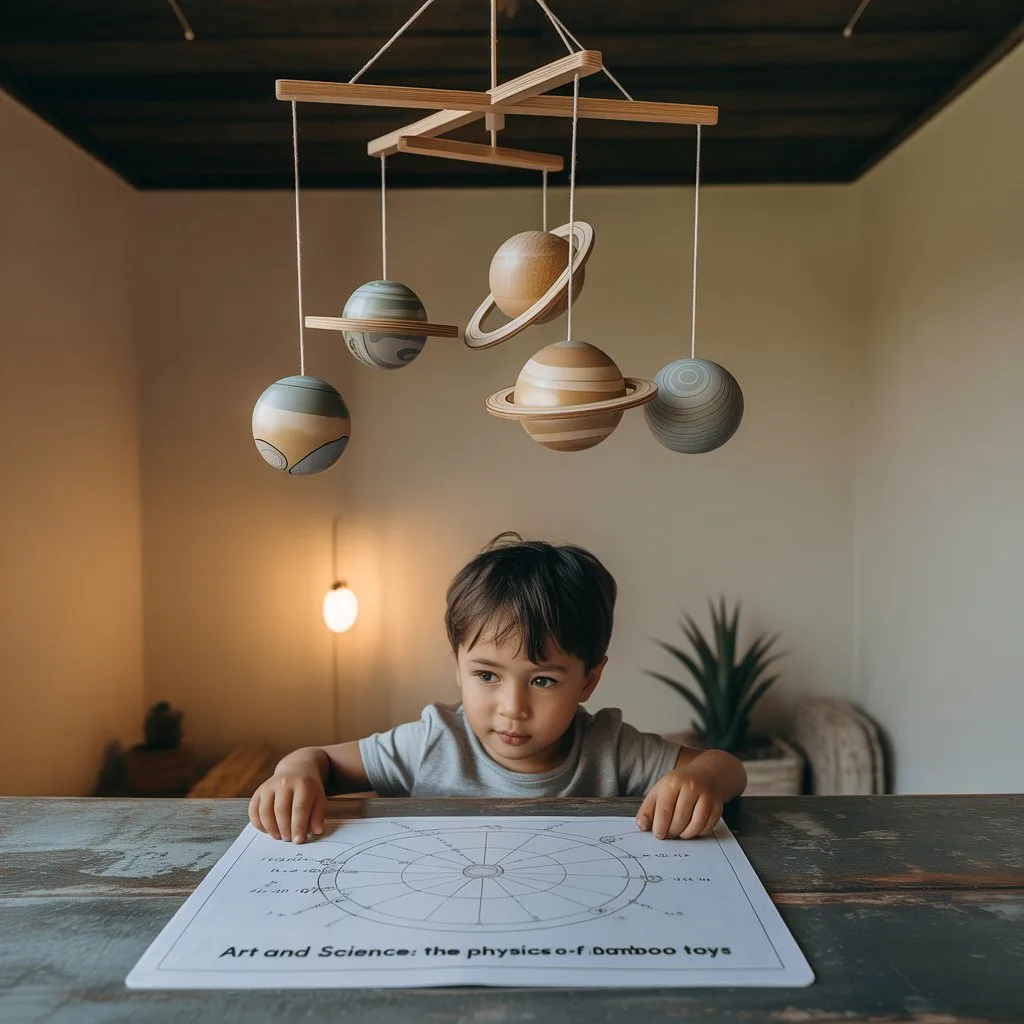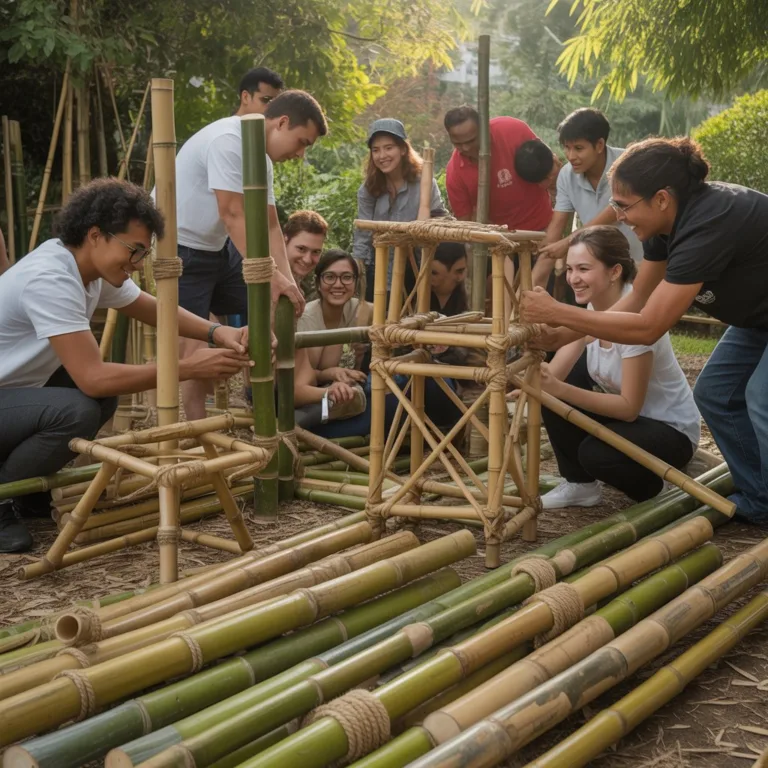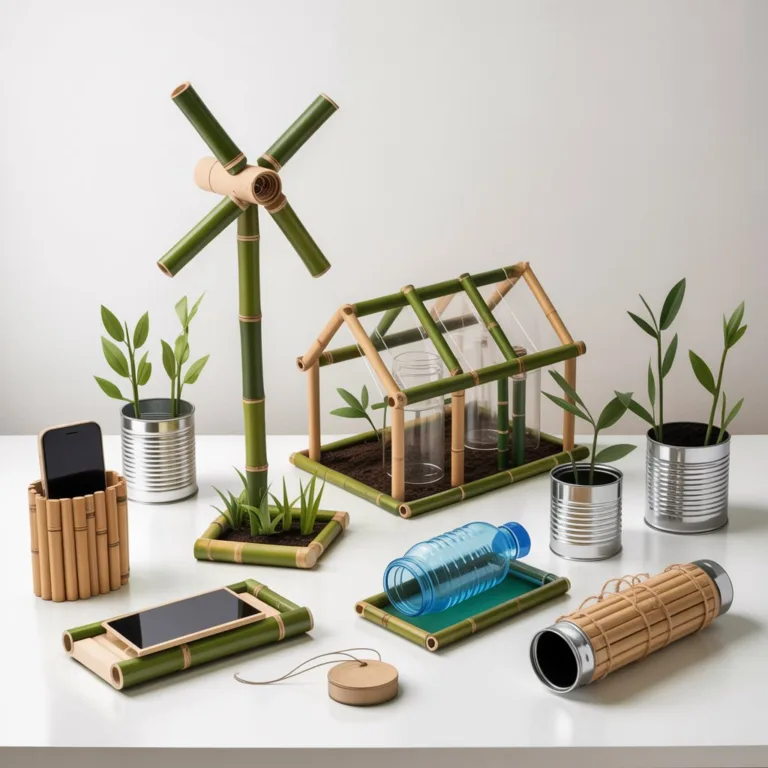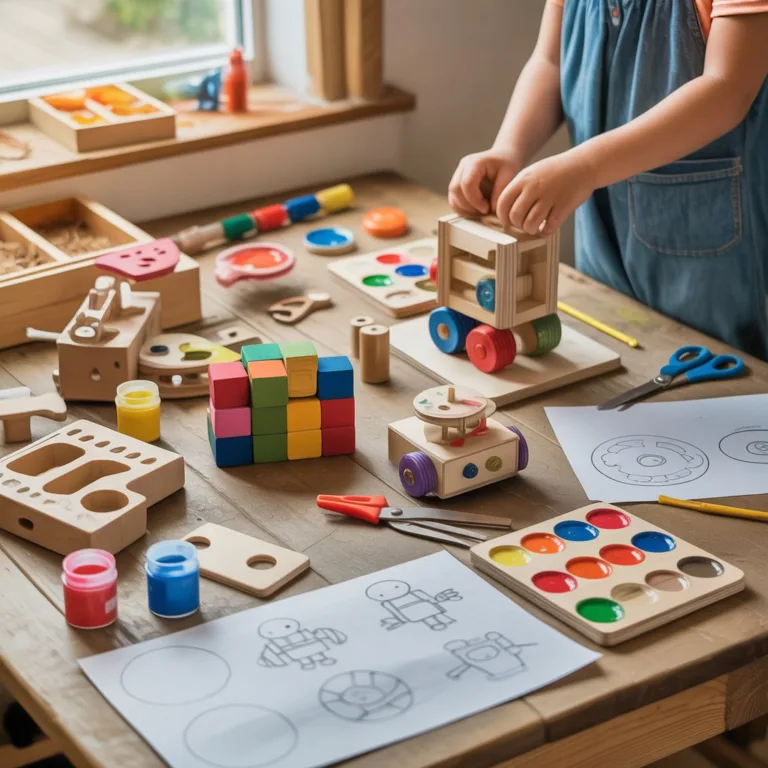There’s something magical about watching a bamboo toy move — the gentle clack of wooden gears, the swing of a pendulum, or the smooth roll of a bamboo car down a handcrafted ramp. These simple creations combine art, creativity, and science in perfect harmony. But beyond their charm lies something deeper: a living lesson in physics, sustainability, and design thinking.

In this exploration of Art and Science: The Physics of Bamboo Toys, we’ll uncover how ancient craftsmanship and modern science meet through one of nature’s most versatile materials. Whether you’re an educator, parent, artist, or DIY enthusiast, bamboo toys offer a hands-on way to understand the principles of motion, energy, and balance — all while reconnecting with eco-friendly creativity.
Why Bamboo Toys Are Perfect for Exploring Physics
Bamboo has been used for centuries to make tools, furniture, and toys. It’s lightweight, durable, and incredibly flexible — a combination that makes it ideal for experimenting with mechanical concepts. But what makes bamboo especially fascinating is how it naturally embodies physics principles in its structure.
Sustainability Meets Science
Unlike plastic, bamboo is biodegradable and regrows rapidly after harvesting. This means every toy built with it is not only educational but also environmentally conscious. When children and adults work with bamboo, they learn to value renewable materials while engaging with scientific curiosity.
A Natural Conductor of Creativity
Bamboo’s smooth texture, hollow structure, and natural elasticity allow makers to explore mechanics — from how motion is transferred through gears to how sound waves travel through hollow tubes. Each creation becomes an experiment in physics disguised as play.
Understanding the Physics of Bamboo Toys
Behind every spinning top, rolling car, or jumping cricket toy lies a series of scientific laws at work. To truly appreciate the beauty of bamboo toy physics, it’s worth breaking down some of the most common forces and principles in action.
Gravity and Motion
Gravity is the invisible force that drives movement in many bamboo toys. Whether it’s a marble rolling down a bamboo ramp or a pendulum swinging back and forth, gravity pulls everything toward the ground.
In a bamboo car, for instance, energy is stored in motion when the toy is released from the top of a slope. The steeper the slope, the faster it accelerates — a clear example of how potential energy (height) converts into kinetic energy (movement).
Friction and Surface Texture
When a bamboo ball rolls on a surface, friction determines how smoothly it travels. Because bamboo can be sanded to a glossy finish, it reduces resistance and allows for faster motion. This makes it perfect for creating racetracks, spinners, or sliding mechanisms where minimal friction leads to impressive results.
Elastic Potential Energy
Some bamboo toys, like jumping frogs or spring-loaded levers, store energy in their flexible parts. When the bent bamboo is released, the stored elastic potential energy converts into kinetic energy, launching the toy forward.
This property is unique to bamboo’s fibrous structure, which combines strength with flexibility — a natural version of what synthetic plastics attempt to replicate.
Balance and Center of Mass
Balancing toys are an excellent way to study equilibrium. A bamboo bird perched on a thin pole, for example, stays upright because its center of mass aligns with the point of support. These designs help explain how stability works — a key concept not only in toy-making but also in architecture and robotics.
Sound and Vibration
Bamboo’s hollow nature makes it resonate beautifully. Musical bamboo toys, such as flutes, xylophones, or rattles, demonstrate how vibration creates sound waves. The pitch of a sound changes depending on the length and diameter of the bamboo tube, offering a practical way to visualize wave frequency and resonance.
Blending Art and Science Through Craft
While physics gives bamboo toys their motion, art gives them their soul. The craftsmanship involved — cutting, shaping, decorating — transforms raw materials into beautiful, functional objects that stimulate imagination and emotion.
When art meets physics, the result is a unique learning experience that engages both sides of the brain: logic and creativity working together.
Design Thinking in Toy Creation
Before building a bamboo toy, makers go through a process of design thinking: imagining how the toy will move, testing prototypes, and adjusting for better results. This mirrors the scientific method — hypothesis, experiment, and conclusion — but with an artistic twist.
Color, texture, and form influence how we perceive the toy, while scientific principles define how it behaves. This union of disciplines makes bamboo toys ideal for STEAM (Science, Technology, Engineering, Art, and Mathematics) education.
Cultural Expression Through Bamboo Art
In many cultures, bamboo toys carry deep traditional significance. From Japanese wind chimes to Filipino spinning tops and Indian bullock carts, these toys reflect local artistry while embodying universal scientific truths. Each handcrafted piece is both a lesson in physics and a celebration of cultural heritage.
Popular Types of Bamboo Toys and the Science Behind Them
Exploring specific examples helps reveal just how much physics hides inside these playful creations. Here are a few bamboo-based toys that beautifully demonstrate scientific principles in action.
Bamboo Rolling Cars
These small cars, made from bamboo tubes, wooden wheels, and string, rely on the conversion of potential to kinetic energy. The slope angle directly influences acceleration. Builders can test different inclines and wheel sizes to study speed, friction, and momentum.
Jumping Bamboo Frogs
A classic children’s favorite, the frog toy uses a springy strip of bamboo to store energy. When pressed and released, it leaps forward — showing how elastic potential energy transforms into motion. By adjusting the bamboo’s thickness, makers can observe how flexibility affects jump distance.
Bamboo Spinners and Tops
Spinning tops demonstrate angular momentum and gyroscopic stability. As the toy spins, the distribution of mass determines how long it can balance before friction and air resistance slow it down. Bamboo’s lightweight yet rigid form allows for longer spin durations compared to heavier materials.
Musical Bamboo Toys
Flutes, rattles, and chimes teach about vibration and sound waves. When air passes through or strikes bamboo, it vibrates at specific frequencies, producing distinct tones. By altering length and diameter, crafters can tune instruments — a tactile introduction to acoustic science.
Bamboo Balancing Birds
This toy challenges players to find perfect equilibrium. When the bird balances on its beak or a single point, it demonstrates how weight distribution and center of gravity determine stability. Adjusting the wings or weights changes how the bird behaves — a real-world physics experiment in balance.
Building Your Own Bamboo Toy: A Creative Science Project
Creating bamboo toys at home or in the classroom is a rewarding way to combine scientific exploration with hands-on creativity. It’s not just about crafting an object — it’s about understanding why it works.
Materials to Gather
- Bamboo sticks or thin poles (recycled or naturally sourced)
- Small saw or cutter
- Sandpaper for smoothing
- Natural rope, glue, or twine
- Recycled wood, cork, or bottle caps (for wheels or decorations)
- Eco-friendly paints or dyes for finishing touches
Designing with Purpose
When designing a toy, consider what physical concept you want to explore — motion, balance, or sound. A simple marble ramp teaches gravity and acceleration. A spinning toy illustrates angular momentum. Encouraging experimentation deepens understanding.
Testing and Observing
Once your toy is built, experiment by changing one variable at a time:
- Adjust slope angles to see how gravity affects speed.
- Change wheel sizes or materials to study friction.
- Modify weight distribution to test stability.
Record observations to connect what happens physically with the design choices made during crafting.
Educational Applications and Learning Benefits
Bamboo toys are excellent tools for educators and parents who want to teach scientific principles through hands-on play.
STEM and STEAM Integration
Projects that involve both art and physics help students grasp abstract concepts more easily. Building bamboo toys brings math, science, and engineering to life while incorporating creativity and problem-solving.
Developing Critical Thinking
As children experiment with balance, angles, and force, they learn to predict outcomes and test hypotheses — essential scientific thinking skills. They also practice patience, focus, and persistence while troubleshooting their designs.
Encouraging Environmental Awareness
Because bamboo toys are eco-friendly, they naturally foster discussions about sustainability. Students see firsthand how natural materials can replace plastic while still being durable and functional. This encourages conscious consumption and environmental responsibility.
Fine Motor and Sensory Development
For younger learners, crafting bamboo toys strengthens hand-eye coordination, spatial awareness, and sensory engagement. The tactile experience of working with smooth, natural bamboo enhances connection to the physical world.
Sustainability and the Future of Eco Toy Design
The return of bamboo as a key material in toy-making reflects a global shift toward sustainability. Eco-conscious parents, artists, and educators are seeking alternatives to mass-produced plastic toys, and bamboo provides the perfect balance of beauty, functionality, and biodegradability.
The Lifecycle Advantage
Bamboo grows rapidly without fertilizers or pesticides, reaching maturity in just a few years. It captures large amounts of carbon and enriches the soil, making it one of the greenest resources available. Every bamboo toy carries a much smaller environmental footprint than its plastic counterpart.
Reviving Traditional Knowledge
In many parts of Asia, Africa, and South America, bamboo craftsmanship is an ancient tradition. By reintroducing these skills in modern classrooms and workshops, we not only preserve cultural heritage but also inspire innovation rooted in sustainability.
Innovation in Eco Toy Engineering
Contemporary designers are now merging bamboo with modern technology — using laser cutting, 3D printing, and robotics to create hybrid eco toys that combine traditional materials with futuristic ideas. The underlying physics remains the same, but the creative possibilities are endless.
Bringing Art, Science, and Nature Together
Art and Science: The Physics of Bamboo Toys is more than a topic — it’s a movement toward mindful creation. Each toy built is a bridge between creativity and knowledge, between the natural world and human curiosity.
Making and studying bamboo toys reminds us that science doesn’t always need complex machines or labs. Sometimes, understanding motion, balance, and energy can begin with a simple bamboo stick and a curious mind. It’s a celebration of ingenuity — where the elegance of nature meets the brilliance of physics in a single handcrafted piece.
So, the next time you hear the soft rattle of bamboo or see a toy spinning gracefully on a table, remember that inside that motion lies an entire world of science, art, and sustainable wonder waiting to be explored.

Elena Mora is a creative educator and eco-craft enthusiast who specializes in bamboo musical instruments and sustainable toys for children. She believes that hands-on learning through play teaches kids about creativity, music, and environmental responsibility.



